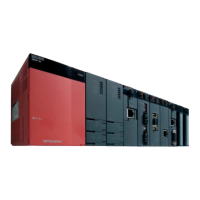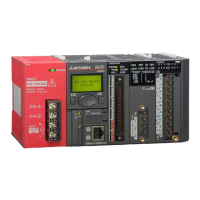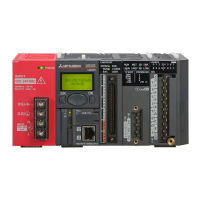4 - 47 4 - 47
MELSEC-Q
4 SEQUENCE PROGRAM CONFIGURATION AND EXECUTION
CONDITIONS
4.8.2 HEX (Hexadecimal)
(1) Hexadecimal notation
In hexadecimal notation, 4 binary bits are expressed in 1 digit.
If 4 binary bits are used in binary notation, 16 different values from 0 to 15 can be
represented.
Since hexadecimal notation represents 0 to 15 in 1 digit, letters A to F are used
to represent the numbers 10 to 15.
Then, a carry occurs after F.
Table 4.3 shows numeric expressions by binary, hexadecimal, and decimal
notations.
Table 4.3 Comparison of BIN, HEX, and DEC Numeric Expressions
DEC (Decimal) HEX (Hexadecimal) BIN (Binary)
00 0
11 1
22 10
33 11
•• •
•• •
•• •
9 9 1001
10 A 1010
11 B 1011
12 C 1100
13 D 1101
14 E 1110
15 F 1111
16 10 1 0000
Carry
17 11 1 0001
•• •
•• •
•• •
47 2F 10 1111
(2) Hexadecimal numeric expression
High Performance model QCPU registers (data registers, link registers, etc.)
consist of 16 bits.
Therefore, the numeric values expressed in hexadecimal notation can be stored
in each register within 0 to FFFF
H
range.

